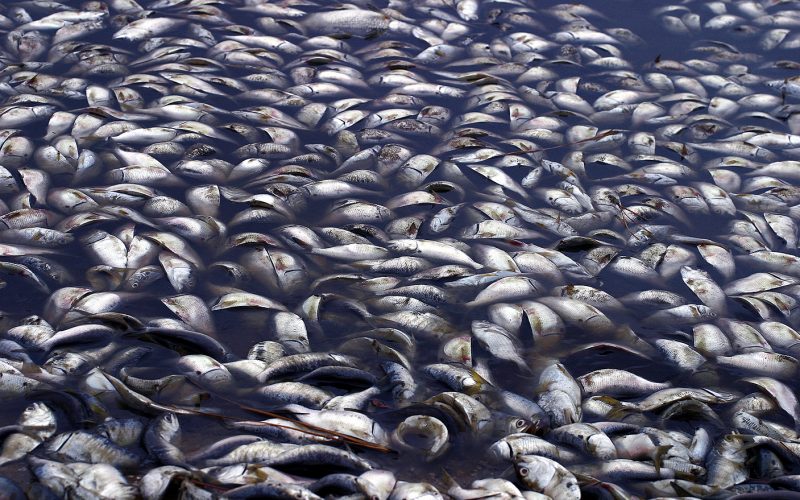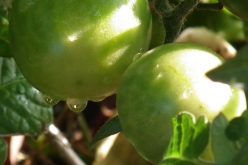 “The key [CAFO’s] success lies not only with the concentration in one operation but in the close proximity of more like them. Those concentrations are the key to the demise of water quality, air quality and the well-being of communities.”
“The key [CAFO’s] success lies not only with the concentration in one operation but in the close proximity of more like them. Those concentrations are the key to the demise of water quality, air quality and the well-being of communities.”
What Arkansas Can Learn from the Swine Saga of North Carolina
Special Contribution By Ginny Masullo
The Buffalo River Watershed Alliance said they hope Arkansas can learn from the swine saga in North Carolina to curb negative effects that Arkansas may face. As part of a public campaign to spread awareness about the possibly harmful effects of confined-animal feeding operations like the one permitted to operate near the Buffalo River, BRWA will host a presentation by Waterkeeper Rick Dove from 6 p.m. t0 8 p. m. Oct. 25, at St. Paul’s Parrish Hall 224 N. East Ave. in Fayetteville.
Thanks to the work of Dove, citizen activists, and the Waterkeeper Alliance, North Carolina officially banned the building of new hog facilities that use the open waste pits and spraying methods. New hog facilities can be built in North Carolina if they use more environmentally-friendly technologies, which have eliminated open waste pits and spraying. That is not the case in Arkansas. The confined-feeding operation that has been built in the Buffalo River watershed is still allowed by Arkansas law to use this open pit or lagoon method.
 Riverkeeper is an environmental nonprofit membership organization dedicated to the protection of the Hudson River and its tributaries, as well as the watersheds that provide New York City with its drinking water. It was the first “keeper” to be founded. Today, there are more than 200 “keepers” around the globe. All of them are now members of the Waterkeeper Alliance umbrella organization. Dove took most of the photos used in current books and articles on the effects of confined-feeding operations on the environment as well as on animals and fish. Find more at www.riverlaw.us.
Riverkeeper is an environmental nonprofit membership organization dedicated to the protection of the Hudson River and its tributaries, as well as the watersheds that provide New York City with its drinking water. It was the first “keeper” to be founded. Today, there are more than 200 “keepers” around the globe. All of them are now members of the Waterkeeper Alliance umbrella organization. Dove took most of the photos used in current books and articles on the effects of confined-feeding operations on the environment as well as on animals and fish. Find more at www.riverlaw.us.
From his home on the Neuse River, where Dove served as its riverkeeper from 1993 to 2000, Dove related by telephone that North Carolina is the second largest pork producer in the United States.
He said that because of North Carolina’s 2007 law requiring improved environmental technologies, hog producers are seeking other areas to build these less costly — and in Dove’s experience morally reprehensible — industrialized hog farms. He emphasizes that where one such facility is built it is the aim of these companies to build more.
“The key to their success lies not only with the concentration in one operation but in the close proximity of more like them. Those concentrations are the key to the demise of water quality, air quality and the well-being of communities,” he said.
The C&H Hog Farm, situated in the Buffalo River watershed and allegedly permitted without public notification by the Arkansas Department of Environmental Quality, may house 2,500 sows and as many as 4,000 piglets. It is allowed to spread waste from the hogs, waste held in open-air pits, over about 630 acres of surrounding grasslands, some of which are close to Big Creek, a tributary of the Buffalo National River. C&H is the first of its kind in the state to hold a federal confined-animal feeding-operation permit under the National Pollutant Discharge Elimination System.
 Don Webb, a former North Carolina industrial hog farmer who quit the business when he saw what it was doing to his neighbors, will join Dove. Webb will relate firsthand stories of neighbors who suffered from the consequences of his hog facility and how he himself became an opponent of such operations.
Don Webb, a former North Carolina industrial hog farmer who quit the business when he saw what it was doing to his neighbors, will join Dove. Webb will relate firsthand stories of neighbors who suffered from the consequences of his hog facility and how he himself became an opponent of such operations.
Dove served in the Marine Corps from 1963 to 1987, primarily as a Judge Advocate and Staff Judge Advocate. When Dove retired from the Marines, he and his son began a commercial fishing operation in 1987 on the Neuse River. He and his fishing business thrived for about two years.
In 1989 Dove and his son observed, in their own catches, dead fish and fish with lesions. Dove and his son experienced weeping open sores. Talking with other commercial fishermen they learned that they too reported lesions along with odd incidents on the water that involved significant memory problems. Dove had also experienced unexplainable instances of memory loss, unusual for the well-organized retired Marine Corps colonel and attorney.
Then in 1990, from August through October, two million fish perished in the Neuse River. It was the largest fish kill in the history of the river, which had experienced small fish kills of a few thousand related to something called a salt wedge phenomena.
Whatever was killing the fish also affected human beings, it seemed. In 1990 Dove closed his fishing operation, saying, “If I won’t eat it myself, how can I sell it wholesale?” He returned to law. Then in 1992 he answered an ad from a local conservation group working with Robert Kennedy Jr.’s Riverkeeper group. They wanted a Riverkeeper for the Neuse River.
As the Neuse River’s first keeper, Dove embarked on a journey that led him to air and ground documentation of the environmental problems associated with industrialized hog pollution. Dove said he and a volunteer force of citizens collected more than “80,000 pictures and hundreds of hours of video. These photos that often show gross violations of basic law have been used in bringing citizen enforcement actions against the hog industry and others who are destroying our nation’s waterways.” More of these photos can be seen at www.riverlaw.us.
Eventually, after years of Dove’s detective work, coupled with research by scientists like Jo Ann Burkholder, whose story is detailed in the 1997 Simon and Schuster book “And the Waters Turned To Blood,” hog CAFOS were identified as a major pollutant of the Neuse.
 Despite the 2007 law in North Carolina, existing and now aging hog CAFOs are major contributors to the over-nutrification of the river that leads to continued large fish kills on the Neuse.
Despite the 2007 law in North Carolina, existing and now aging hog CAFOs are major contributors to the over-nutrification of the river that leads to continued large fish kills on the Neuse.
“North Carolina, has some reasonably good laws in place. But that does not take care of the mess that the still operating open pit hog farm factories make,” Dove said. “The state of North Carolina does not allocate adequate funds for the enforcement of the laws.”
North Carolina continues to suffer health and environmental consequences of hog factory farms. The Pew 2008 intensive study of industrialized farms done in conjunction with the John Hopkins Bloomberg School of Public Health confirms this sentiment. The Pew Study (access it at www.ncifap.org) concluded, “Problems associated with CAFOs are unintentional, but that does not mitigate the need to move forward in a positive direction. Failure to address these issues will only result in a further lack of confidence in the animal agriculture industry, increased environmental damage, worsening public health, dismal animal welfare and a grave outlook for rural communities.”
Dove hopes to use the tragedies of environmental pollution that continue to occur as a result of CAFOs as an inspiration to prevent damage in sensitive areas in the Ozarks and elsewhere. When asked what kept him working on this issue for two decades, Dove replied “Once you find out how wrong these operations are, you can’t get up in the morning and not do something about it.”
Light a Fire for the Buffalo:
The Buffalo River Watershed Alliance will hold a bonfire and music fundraiser following the Rick Dove presentation at St. Paul’s. Music will be by Blue Springs around the bonfire at the home of Deborah and Dan Coody. Directions to the fire will be available at the St. Paul’s event. In the event of rain, music and fundraising will continue at St. Paul’s after Dove’s presentation.










